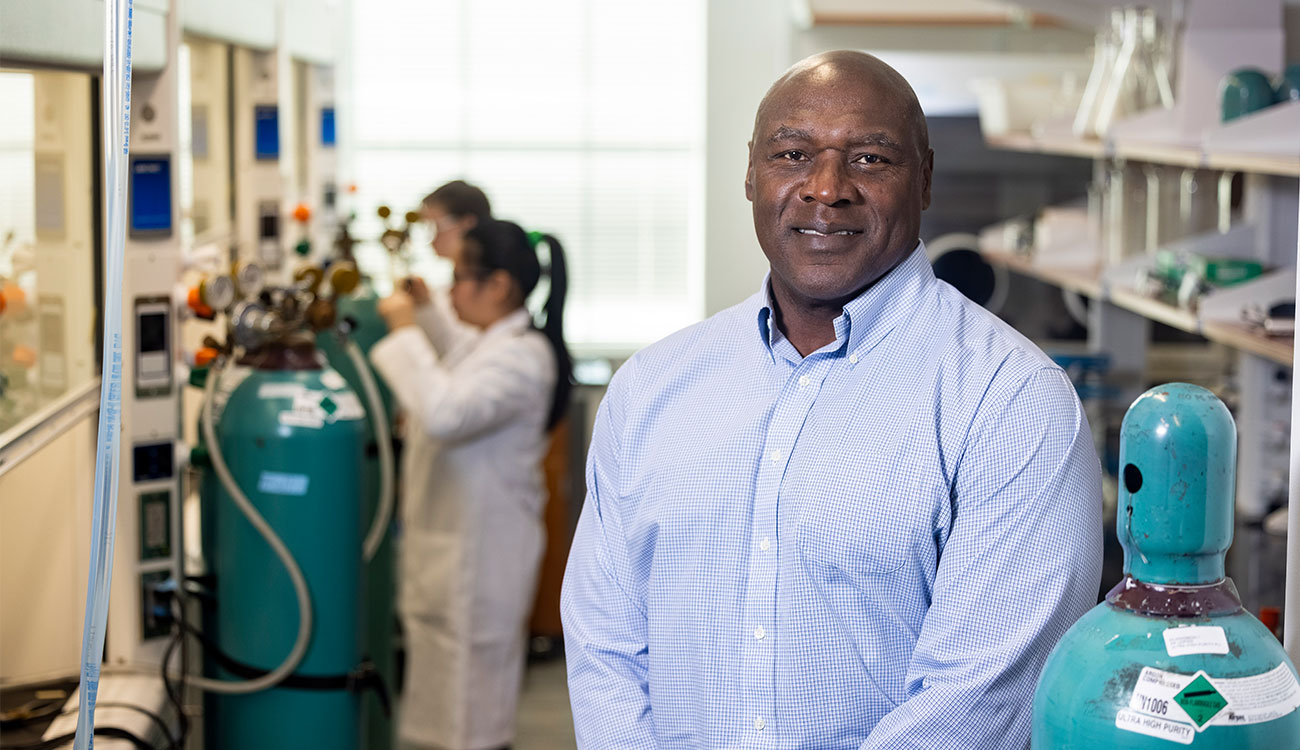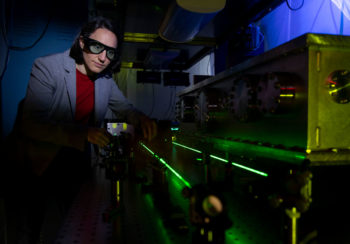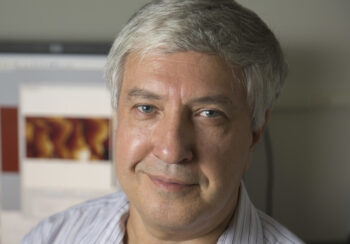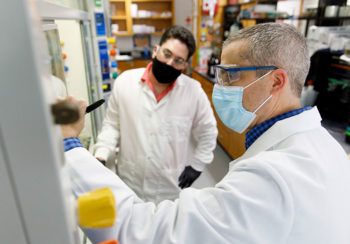Gregory Robinson was studying chemistry and playing football as an undergraduate student at Jacksonville State University in the late 1970s when he met Jerry Atwood. A professor at the University of Alabama, Atwood was recruiting students to attend graduate school.
There was no master plan at the time, but it was a meeting that would change the trajectory of Robinson’s career forever.
“Each of us encounters a multitude of seemingly trivial events on a daily basis,” Robinson said. “However, the decisions that we make related to some of those events can ultimately prove quite consequential.”
That chance meeting between Robinson and Atwood has proven to be most consequential.
Robinson is the Foundation Distinguished Professor of Chemistry at the University of Georgia, where he’s been a faculty member since 1995. His pioneering research has made enormous impact in chemistry and discoveries in sustainable energy, from exploring metalloaromaticity to the first example of a boron-boron double bond in a molecule.
Research Communications recently interviewed Robinson, a member of the prestigious National Academy of Sciences, and discussed his groundbreaking research.
Research Communications: Could you describe your current research focus?
Gregory Robinson: Broadly speaking, our research seeks to address particularly unique synthetic challenges like the preparation of molecules relevant to nanotechnology or the molecular development of carbon-free fuels. It involves the synthetic inorganic chemistry of molecules that prominently feature “main group” elements of the Periodic Table. Recalling the basic shape of the Periodic Table, the main group elements comprise the two tall columns on the left-hand side and the six tall columns on the right-hand side. Unlike the transition metals—which reside between these two areas—the main group elements are generally earth-abundant and considerably less costly to isolate than most transition metals.
A major thrust of our current research considers traditional chemical transformations that may utilize expensive and rare transition metals such as gold, silver, platinum, palladium, or rhodium. We synthesize molecules featuring earth-abundant main group elements, such as carbon, nitrogen, sulfur, boron, magnesium, and aluminum, in a specific molecular combination and proportion, and evaluate if the same chemical transformation can be accomplished using these new cluster molecules. Essentially, we seek to mimic the chemistry of expensive and rare transition metals, using abundant, less toxic, and economically sourced main group elements.
You introduced the concept of “metalloaromaticity” in 1995. Could you define metalloaromaticity and describe how “metalloaromatic molecules” differ from traditional “aromatic molecules?”
From a chemistry perspective, “aromatic” molecules have nothing to do with smell or aroma—at least not in modern science. Generally, the term “aromaticity” refers to a special class of molecules that contain planar carbon ring systems. The best example of an aromatic molecule is the iconic benzene molecule. Benzene contains a planar six-membered ring of carbon atoms and possesses a set of six unique electrons which lends additional stability to the molecule.
Chemists long accepted that ring molecules containing carbon—perhaps along with one or two sulfur or nitrogen atoms—could be termed “aromatic”. Utilizing the main group metal gallium, we synthesized, in 1995, the first molecule containing a ring of three gallium atoms—the first “cyclogallene.”
Notably, this molecule exhibited all the characteristics and properties typically ascribed to aromatic molecules, but from a metallic ring system. Consequently, we adopted the term “metalloaromaticity” to describe a molecular system wherein properly constrained metal rings could display traditional aromaticity behavior. The experimental realization of metalloaromaticity remains a milestone in chemistry.
Robinson was one of several UGA researchers featured in a series of videos made in 2018 for the Commit to Georgia campaign. The video explores Robinson’s upbringing and journey, as well as the impact his work has made in the field of chemistry.
What was the significance of that milestone? Are there potential applications that could improve everyday life?
Science constantly evolves. Some scientific principles that are valid today may be shown to be much more nuanced or substantially revised at some later time. Metalloaromaticity is a great example of the evolution of the concept of aromaticity. The iconic molecule ammonia is another excellent example. For well over a century ammonia has had a profound worldwide impact on everything from fertilizers for food production to plastics. However, ammonia is now being discussed as a possible carbon-free fuel or as a convenient means to deliver dihydrogen as a potential fuel.
In terms of potential applications of our work, some of our main group molecular clusters have shown promise in liberating hydrogen from ammonia. If that is successful, then perhaps using molecular hydrogen as a fuel could be part of a multifaceted solution to our energy needs as a planet.
What professional or life skills did you garner from your athletic pursuits in high school and college, and have you found them useful professionally?
Although I played baseball, basketball, and football in high school, I was limited to football in college at Jacksonville State University. One often acquires a myriad of life skills from athletics, although such skills may also be acquired beyond athletics. Teamwork and determination are the skills that have proven to be the most critical for me professionally. Regarding teamwork, Dr. Yuzhong Wang, senior research scientist in my lab, has been critical to the advances and discoveries that we’ve made. Dr. Wang and I have “good chemistry.”
Are there any exciting opportunities or breakthroughs you foresee in this field that could positively influence the broader scientific community?
It is instructive to take the long view in science. Imagine that you are taking a walk, and you see a pyramid far off in the distance. From the initial perspective, the pyramid appears to be one uniform structure. Only when you are near the pyramid would one discover that the pyramid is made up of thousands, perhaps hundreds of thousands of individual bricks, each brick serving an important function for the stability of the entire structure.
Similarly, the foundation of science and engineering is made up of a myriad of foundational, discrete discoveries. The quest for renewable energy remains a grand scientific challenge and the solution will certainly be multi-faceted—with chemistry playing a major role.






